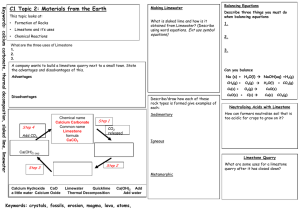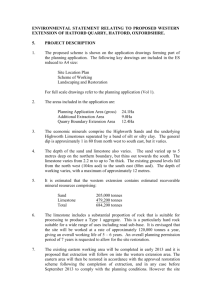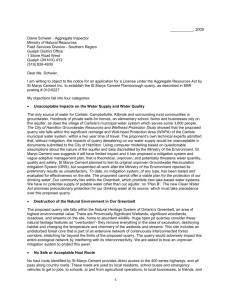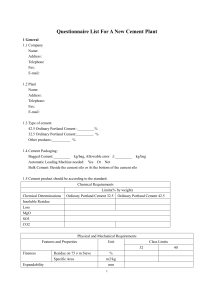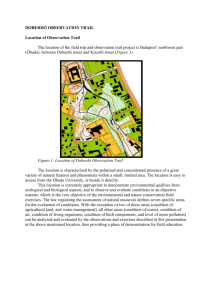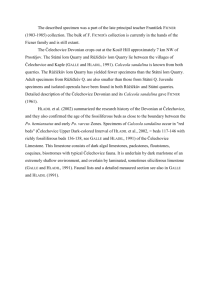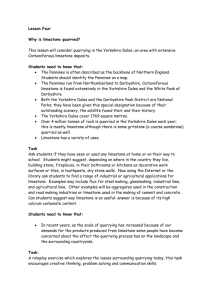Mystery cards
advertisement
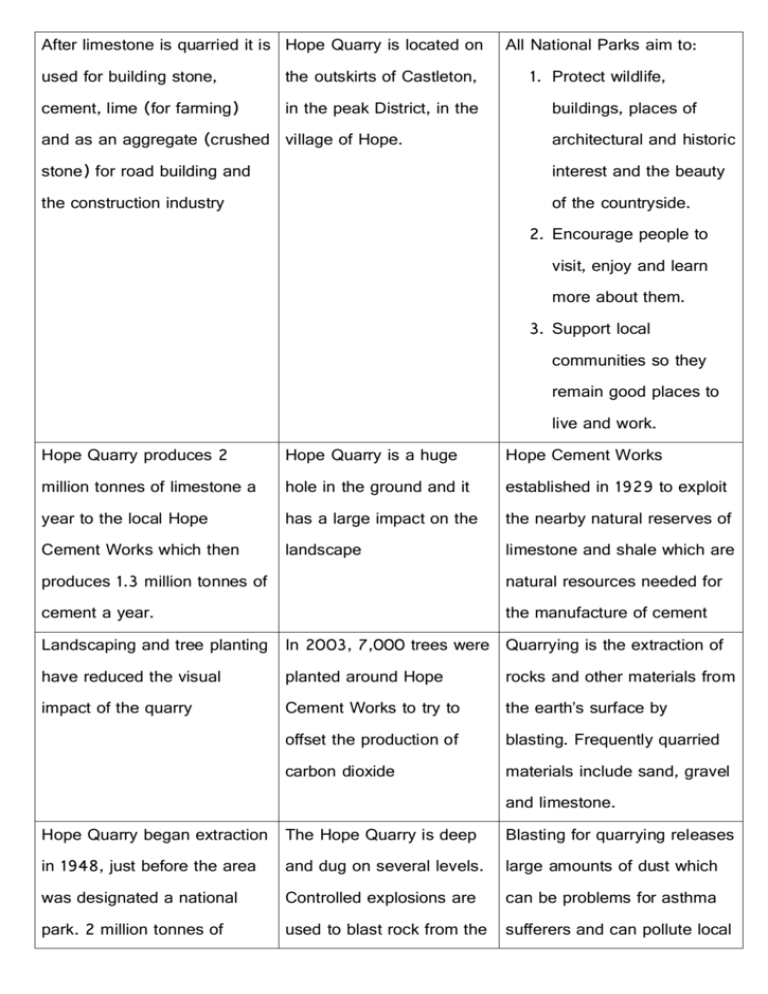
After limestone is quarried it is Hope Quarry is located on used for building stone, the outskirts of Castleton, cement, lime (for farming) in the peak District, in the All National Parks aim to: 1. Protect wildlife, buildings, places of and as an aggregate (crushed village of Hope. architectural and historic stone) for road building and interest and the beauty the construction industry of the countryside. 2. Encourage people to visit, enjoy and learn more about them. 3. Support local communities so they remain good places to live and work. Hope Quarry produces 2 Hope Quarry is a huge Hope Cement Works million tonnes of limestone a hole in the ground and it established in 1929 to exploit year to the local Hope has a large impact on the the nearby natural reserves of Cement Works which then landscape limestone and shale which are produces 1.3 million tonnes of natural resources needed for cement a year. the manufacture of cement Landscaping and tree planting In 2003, 7,000 trees were Quarrying is the extraction of have reduced the visual planted around Hope rocks and other materials from impact of the quarry Cement Works to try to the earth’s surface by offset the production of blasting. Frequently quarried carbon dioxide materials include sand, gravel and limestone. Hope Quarry began extraction The Hope Quarry is deep Blasting for quarrying releases in 1948, just before the area and dug on several levels. large amounts of dust which was designated a national Controlled explosions are can be problems for asthma park. 2 million tonnes of used to blast rock from the sufferers and can pollute local limestone are extracted each ground. The limestone is year, used to produce 10% of then taken to a crusher the UK's cement. where it is broken down water supplies into smaller pieces. There are 12 active quarries The Hope Quarry is The Peak District National in the Peak District National located close to Castleton Park was designated in 1951 Park. in the Peak District National Park Hope Quarry produces a £15 million has been spent Hope Cement Works source of money for the local on improving transport. produces 1 million tonnes of council, through taxes and Rail is used rather than carbon dioxide a year. rates road. A single train is equivalent to 57 lorries on the road. The quarry is likely to have The quarry and cement The Peak District National reserves for another 30-35 works employ 300 local Park has millions of visitors years. There is currently people, many of whom live every year – 22 million visitor restoration happening in the in the village of Hope. days a year. It is surrounded areas that can no longer be by the cities of Manchester quarried. and Sheffield so there are a lot of day trippers as well as people staying for longer periods. Limestone extraction in the The employees use the The Peak District National Peak District shops and services in Park covers 555 square miles 1951 – 1.5 million tonnes Hope resulting in money in and is home to 38,000 2001 – 7.8 million tonnes the local economy – the people and 2,800 business. multiplier effect. In 2003 Hope Cement Works Efforts have been made to One of the old quarry areas is started to use chipped tyres reduce dust now managed as a wetland as a fuel to preserve fossil resource fuels and recycle materials Heavy lorries transporting Wildlife and habitats have Noise pollution from the limestone cause congestion been destroyed and lost blasting affect the wildlife and on narrow roads and increase local population the likelihood of accidents. They also mean that the roads need to be repaired more often. The demand for limestone 70% of the quarried based products meant that limestone is transported by landscaped to reduce its there was a rapid increase in rail. limestone extraction in the Peak District since the 1950s reaching a peak in 1991. There has since been a decline Hope Quarry has been visual impact on the surrounding area

